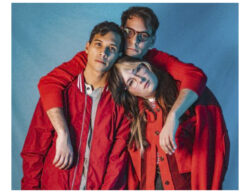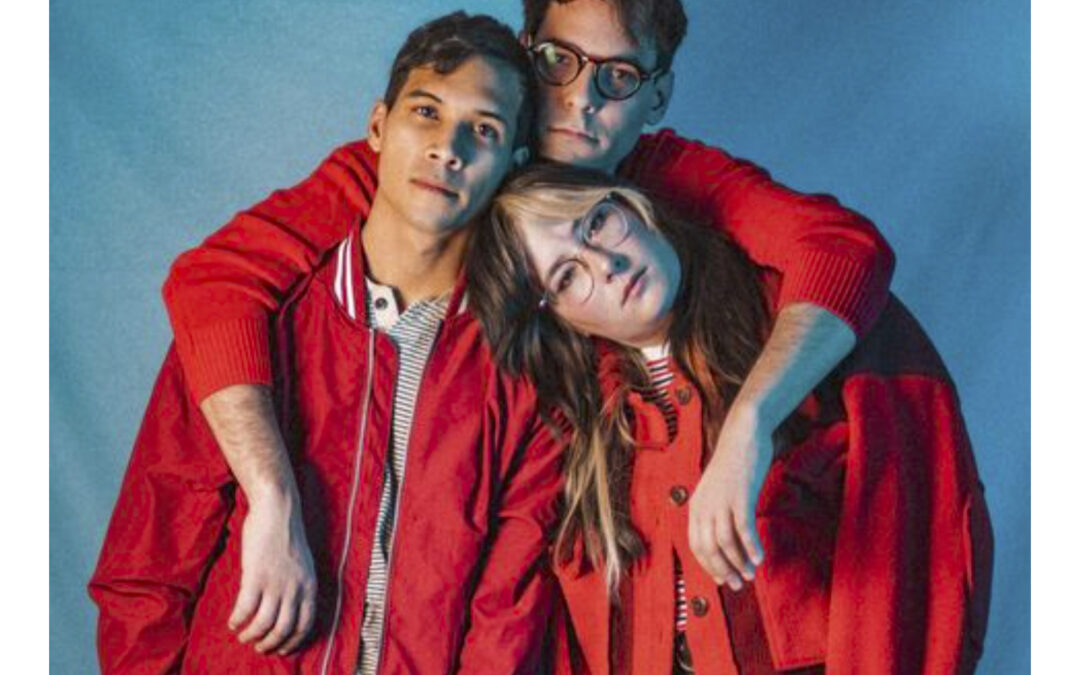 The After Hours Back Here Again album is available now. Engineer and producer Jason Shaffer sat down for an interview with BaS Music Creations to discuss his experience recording the band. Read the Full Tilt Q & A interview with Jason Shaffer bout the unique recording process used by The After Hours and Full Tilt Productions.
The After Hours Back Here Again album is available now. Engineer and producer Jason Shaffer sat down for an interview with BaS Music Creations to discuss his experience recording the band. Read the Full Tilt Q & A interview with Jason Shaffer bout the unique recording process used by The After Hours and Full Tilt Productions.
Q1:
- Q. How did you meet The After Hours band members?
- A. I’ve known some members of The After Hours band since 2009-2010. Back then they went by a different name (Hot Jam Factory) and contacted me about recording a type of mini-album called an EP. I don’t remember exactly how they found me, but I am grateful they did. Our rapport was instantly good and we shared similar music tastes and backgrounds. Hot Jam Factory (HJF) was initially founded on a combo of raw garage and 70’s psychedelic-style music. Honestly, their sound (to my ears) was like Iggy Pop meets Pink Floyd and I loved it.
Q2:
- Q. What inspired The After Hours to morph to their current name, lineup and vibe?
- A. In 2020 they brought GarageBand tracks into the Full Tilt Productions studio. It was my job to handle post-production editing and track cleaning. Those tracks had what I would call a slight stylistic change. I could hear a touch of the Hot Jam Factory (HJF) sound in there but also hear how that unique HJF style was expanding. Talk was also floating around during those sessions about changing the band name and going in a different direction.
Q3:
- Q. The After Hours has a unique recording process, correct?
- A. Definitely! The After Hours has this post-pop-punk 80s retro style. Their sound is still raw and rough, though, and less processed than most music in modern times. Synthesizers were a new but huge part of the 80s sound. The After Hours music is heavily inspired by the electronic creativity of that decade. Also similar to that era, tracks on their new album are lush and involve significant layers of production. I really love how they manage to keep their overall sound raw and rough, while still incorporating deeper layers of sounds, tones and instrumentation. What’s really unique about their recording process is their ambitious use of what are called “found sounds.”
Q4:
- Q. What are found sounds?
- A. Found sounds are sounds recorded using either random or specifically chosen items simply lying around or discovered/found. A found sound might be created from an iron or an anvil. A coffee pot, leather belts or plywood might also be used. Anything interesting lying around and stumbled upon is a possible candidate as a found sound.
Q5:
- Q. Based on that definition, is is it fair to say The After Hours is constantly looking for ways to incorporate found sounds into their music?
- A. Oh, yeah. Absolutely, They seem to like when their listeners snap their heads to one side and ask “What was that?” in a song. The After Hours takes pride in surprising their listeners in artistic and fun ways.
Q6:
- Q. Can you elaborate on this and talk more about The After Hours found-sound recording process?
- A. Sure. To be clear, recording found sounds is not the band’s entire process. It does get a lot of time and attention, though. The process is not always random, either. For example, certain sounds on the new album began as recognizable synth parts. Some of those parts ended up getting twisted into something unexpected because we (me or the band) thought certain sections of certain songs needed a kick. HJF would hire horn & string players to perform on stage and record parts in the studio. The After Hours kept that concept going in their current music as well. For example, one sax part on the new album started off as a regular sax performance but was mangled into this cool, distorted electronic keyboard sound in the background. Other times, we’d look for items sitting around the studio to experiment with or someone would bring in tracks or sounds they made at home. A traditional shaker part would be replaced by something we found on a scavenger hunt around the studio. In one song we used a coffee pot for a “ding” type of percussion sound. The After Hours goes out of the way to find any item or sound that shouldn’t fit – but does.
Q7:
- Q. You mentioned you know “some” band members from the Hot Jam Factory days. Who are the remaining and new members that make up The After Hours?
- A. Core members of The After Hours include Jordan Trevino, Sean Saman and Elena Rossetto. The band also works with a few auxiliary or contributing musicians who are treated like core members because the band is just so cool. Contributing musicians working with The After Hours include:
- Gordon Lauffer – drums during live shows.
- Rob Heck – Guitars during live shows.
- Dave Turby – Guitars during live shows.
- Various horn & string players.
Q8:
- Q. What instruments do Jordan, Elena and Sean play?
- A. The After Hours has some of the most talented mix-and-match musicians I’ve ever worked with. Jordan plays primary guitar and sings lead vocals. He also plays drums, keys and sings background vocals. Elena sings lead and background vocals, rocks a killer bass and plays keys and percussion. Sean is the main keys guy in this band. He’s the one who gets deep into drum machines, synths and samples. I have been a studio owner and engineer for a long time. Sean brings in some of the coolest hardware units I have ever seen – things I didn’t even know exist! To top it off, Sean also plays cello on stage and in the studio.
Q9:
- Q. Do you feel you have a strong creative bond with this band in particular?
- A. Yes. A lot of synergy and similar thoughts happen during the sessions with this band. Then at times when we are thinking different directions, we work through those creative differences for the betterment of project. Sometimes Jordan will be out there in found-sound-mode and I can help bring him back to center. Other times Jordan swings me back to liking ideas I initially thought wouldn’t work but turn out to be essential parts of a track. Trust with each other is super important to the creative bonding process. Jordan is brilliant and constantly creating. I liken him a lot to Brian Wilson because he maintains flexibility but leaves no stone unturned. He tries every idea on the table (and even under the table). There is no hesitation about spending three hours to go down a creative path … then cut a part or idea it if it doesn’t work. Sometimes my role is to help Jordan contour the many parts and ideas he has into working together to form the final arrangement. Other times he gives me ideas about how to engineer certain tracks. The band writes together, swap instruments and work collectively all the time. There is really no ego about it. Jordan might come up with a keys part and Sean finishes it, or vice versa. It’s a very cool vibe to be a part of.
Q10:
- Q. Any final Thoughts on your experiences working with The After Hours?
- A. Yes! First of all, I just want to say what a cool experience recording this album was for me. Their creativity using found sounds gave me an interesting challenge in the studio. I love their familiar retro sound that still belongs here in modern times. Also, you can stream The After Hours on their Spotify Their Bandcamp site has multiple individual tracks and full albums available for purchase and download. Additional ways to check out music from The After Hours include:
- YouTube.
- Linktr.ee.
- Apple Music.
- Instagram.
- Amazon.
- Full Tilt Productions (Recent Projects).

